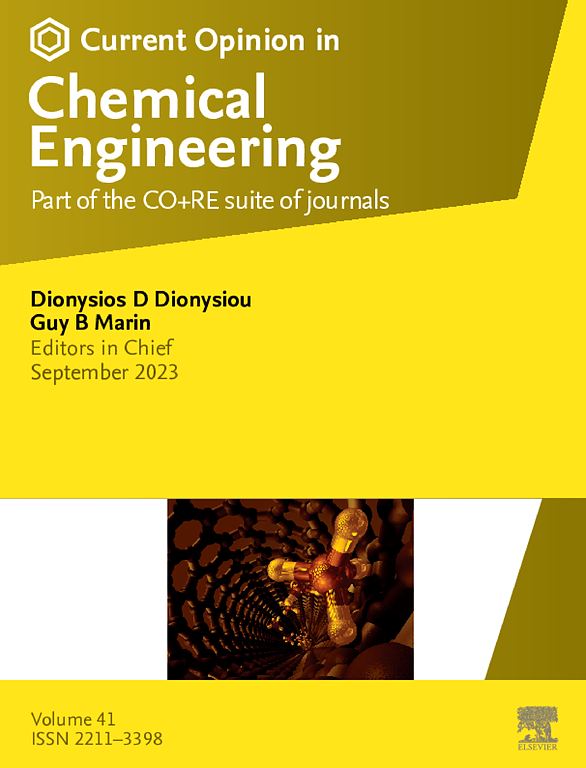Current status of chemical- or enzyme-assisted ultrasonic pre-treatment processes for lignocellulosic biomass to assess industrialization progress: A review
IF 6.8
2区 工程技术
Q1 BIOTECHNOLOGY & APPLIED MICROBIOLOGY
引用次数: 0
Abstract
Global warming and rising pollution levels require a paradigm shift from fossil fuels to renewable feedstock. The valorization of lignocellulose, a virtually endless resource, implies the selective extraction of the three main components, cellulose, hemicellulose and lignin, to then treat them separately. Among the methods of pretreatment/preferential dissolution of biomass, low-frequency ultrasound (US) has shown to be a promising disruptive technology. Eager to be combined with physical technologies, chemical agents or enzymes, many examples under low-frequency US exist at the lab scale. However, examples of scaling-up of US-processing of biomass remain yet scarce. It appears quite challenging to design ultrasonic equipment that allows sufficient and homogeneous energy powers in large volumes, although recent pioneering work shows considerable progress. This review aims at highlighting the latest works on biomass pretreatment under chemically or enzymatically assisted ultrasonic irradiation on both lab and pilot/semi-industrial scales together with future directions to enable scale-up of ultrasonic processes for biomass valorization.
木质纤维素生物质化学或酶辅助超声预处理工艺的现状及产业化进展综述
全球变暖和不断上升的污染水平要求从化石燃料转向可再生原料。木质纤维素是一种几乎无穷无尽的资源,其增值意味着选择性地提取三种主要成分:纤维素、半纤维素和木质素,然后分别处理它们。在生物质的预处理/优先溶解方法中,低频超声(US)已被证明是一种有前途的颠覆性技术。渴望与物理技术、化学试剂或酶相结合,在实验室规模上存在许多低频US的例子。然而,美国扩大生物质加工规模的例子仍然很少。尽管最近的开创性工作取得了相当大的进展,但要设计出能够大量提供充足且均匀能量的超声波设备似乎相当具有挑战性。本文综述了化学或酶辅助超声辐照下生物质预处理在实验室和中试/半工业规模上的最新研究进展,并展望了未来的发展方向,以实现生物质增值的超声工艺的规模化。
本文章由计算机程序翻译,如有差异,请以英文原文为准。
求助全文
约1分钟内获得全文
求助全文
来源期刊

Current Opinion in Chemical Engineering
BIOTECHNOLOGY & APPLIED MICROBIOLOGYENGINE-ENGINEERING, CHEMICAL
CiteScore
12.80
自引率
3.00%
发文量
114
期刊介绍:
Current Opinion in Chemical Engineering is devoted to bringing forth short and focused review articles written by experts on current advances in different areas of chemical engineering. Only invited review articles will be published.
The goals of each review article in Current Opinion in Chemical Engineering are:
1. To acquaint the reader/researcher with the most important recent papers in the given topic.
2. To provide the reader with the views/opinions of the expert in each topic.
The reviews are short (about 2500 words or 5-10 printed pages with figures) and serve as an invaluable source of information for researchers, teachers, professionals and students. The reviews also aim to stimulate exchange of ideas among experts.
Themed sections:
Each review will focus on particular aspects of one of the following themed sections of chemical engineering:
1. Nanotechnology
2. Energy and environmental engineering
3. Biotechnology and bioprocess engineering
4. Biological engineering (covering tissue engineering, regenerative medicine, drug delivery)
5. Separation engineering (covering membrane technologies, adsorbents, desalination, distillation etc.)
6. Materials engineering (covering biomaterials, inorganic especially ceramic materials, nanostructured materials).
7. Process systems engineering
8. Reaction engineering and catalysis.
 求助内容:
求助内容: 应助结果提醒方式:
应助结果提醒方式:


